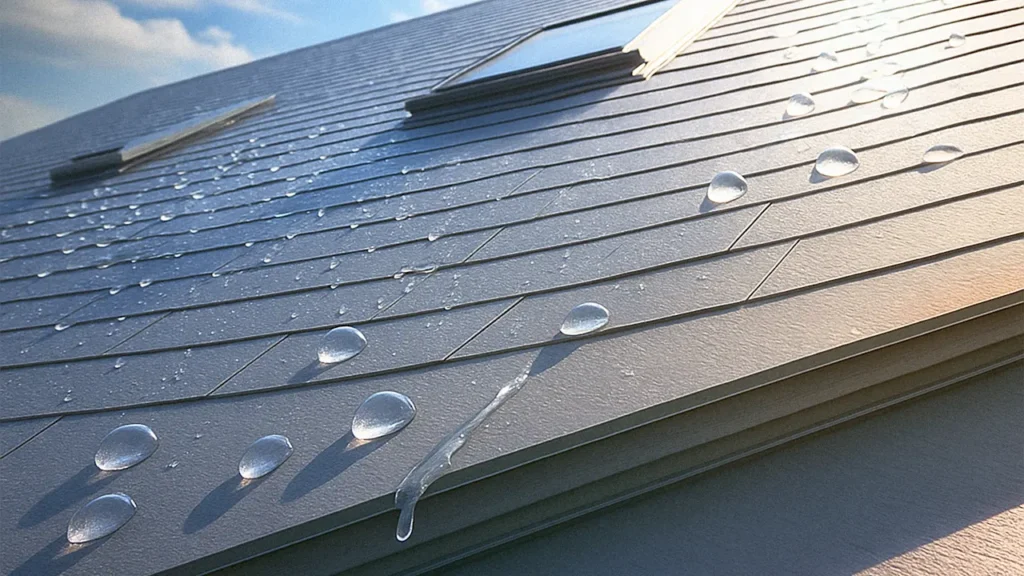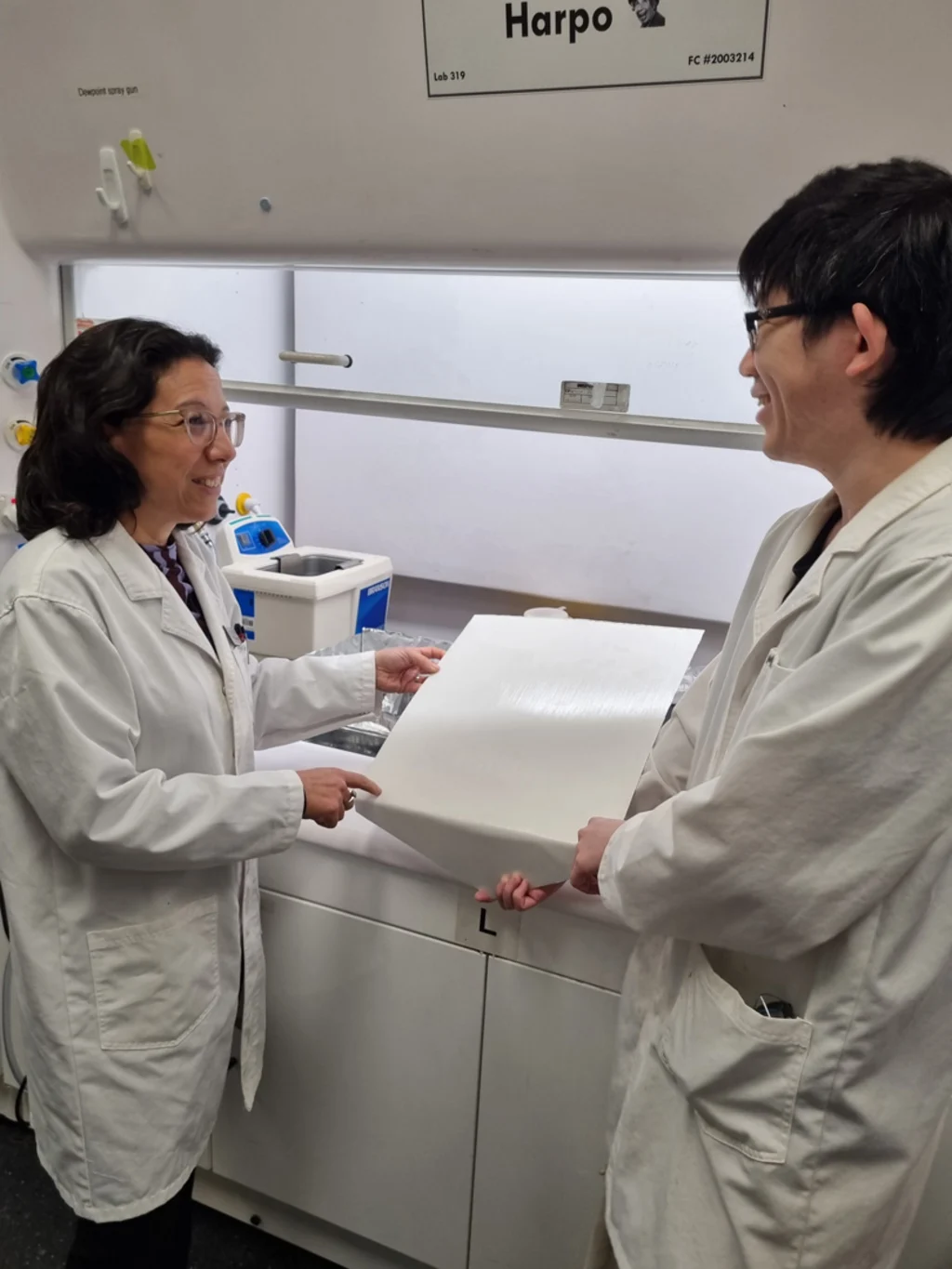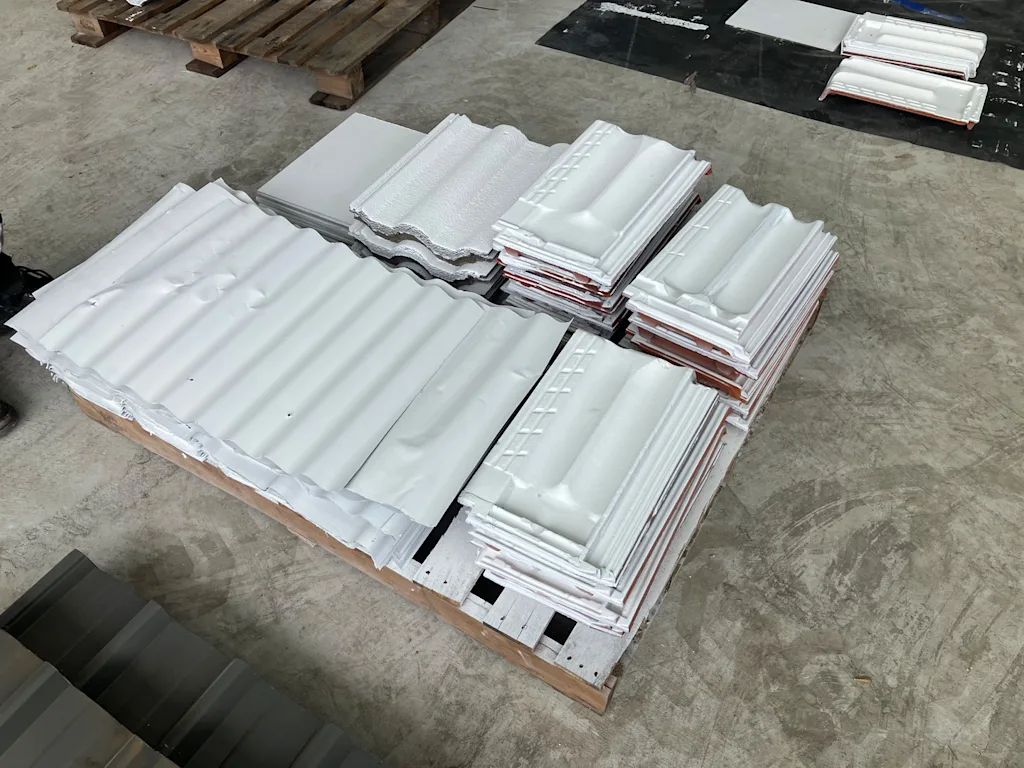
With little more than a coat of paint, buildings could soon make the air around them cooler and harvest gallons of water directly from the atmosphere.
Researchers at the University of Sydney in Australia have created a nanoengineered polymer coating that passively cools building surfaces while enabling them to collect water like dew-coated leaves. It’s a material solution that could help combat rising heat and water insecurity in places all over the world.
The white coating, a porous paint-like material, reflects up to 97% of sunlight and radiates heat, making surfaces up to 10 degrees cooler than the surrounding air, even under direct sun. This cooler condition allows water vapor in the air to condense like dew on the smooth coating surface, where it can be collected. In a recent test, a roughly 10-square-foot area treated with the coating was able to harvest 1.6 cups of water over the course of single day.

This research was led by Chiara Neto, a professor at the University of Sydney’s Nano Institute and School of Chemistry. Neto is also co-founder of a startup that’s commercializing this coating, called Dewpoint Innovations. “Our main goal in designing this new material is to address water scarcity, providing a sustainable and delocalized source of water that is entirely passive,” she says.

Reflective paint 2.0
Solar-reflective paint is hardly new to the world of sustainability, and it’s been used widely to reduce heat gain on everything from buildings to UPS trucks to playgrounds. This new coating builds on those applications by taking more advantage of the cooler air produced by bouncing heat off a building, creating a surface onto which water vapor can condense in the cooler ambient temperatures. The coating’s porous nature makes it more durable than typical reflective paints, which enables it to better collect dew than other surface coverings that quickly degrade.
The cooling and water harvesting potential of the coating could be substantial, according to a study recently published in the journal Advanced Functional Materials. The researchers measured the coating’s performance in six months of outdoor tests on the roof of a building on the campus of the University of Sydney. Specially designed surfaces and measurement tools tracked surface temperature and dew water collected on a minute-by-minute basis alongside weather and climate data to better understand when the coating would perform best.

A theoretical model extended that data to create a water capture prediction for the rest of Australia, suggesting the highest water capture rates in the tropical northeast of the country. Neto says this model could be used by extension in the rest of the world, and has identified places where the coating could be especially useful.
“The areas most suited to the passive cooling effect are areas in which the sky is often clear of clouds, and the amount of water in the air is not too high and not too low (ideally around 80% relative humidity), to obtain the highest cooling of the surface and the highest water condensation,” Neto explains.
She notes that the coatings need to be clearly exposed to the sky to be most effective. “If used on the walls of buildings, they would still bring some cooling, but not as much as on the roof,” she adds. The ideal configuration is at a small tilt, a roof angled at about 30 degrees, to enable the roll-off of water droplets.

But even in places where the humidity is too low to harvest much dew, the reflectivity of the coating will still provide the benefit of lower ambient temperatures and reduced energy requirements for buildings. The coating is not designed to be used as a ground cover, but Neto says it could be used in tilted and flat areas around sport courts, fields, on tents, on animals sheds, and other spaces.
If it were to be implemented widely, the coating could provide a steady source of water, albeit a small one. The study found that a one-square-meter section of roof treated with the coating could harvest up to 390 milliliters of water per day, a little more than a cup and a half of water from about 10 square feet of surface. Scaling up to the size of a building, that could add up to several gallons worth of water a day. That may not seem like a lot when the average person in the U.S. uses more than 150 gallons per day, but the volume could easily add up as more buildings are retrofitted, or even designed specifically, to use this coating.
This passive approach to water collection “opens the door to sustainable, low-cost and decentralized sources of fresh water—a critical need in the face of climate change and growing water scarcity,” Neto says.


